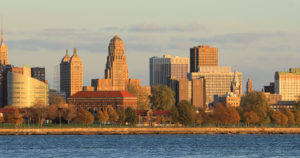Author: Avrohom C. Posen
Adult-use cannabis legalization was passed in New York State when Governor Andrew Cuomo signed the Marijuana Regulation & Taxation Act (the “MRTA”) into law on March 31, 2021, after the Governor had previously attempted to include the legalization of adult-use cannabis in his last three budget proposals. The MRTA is expected to create significant economic opportunities for New Yorkers and the State, which should help the State generate some much needed tax revenue to address the budget shortfalls resulting from the Covid-19 pandemic. The Governor’s office estimates that legalization could create 30,000 to 60,000 new jobs and the tax collections from the adult-use cannabis program could reach $350 million annually.
In order to raise the projected revenue while furthering the stated policy goals of helping those from disproportionately impacted communities and community reinvestment, New York took a novel approach to taxation of cannabis. The Act implements a new cannabis tax structure imposing a tax per milligram of tetrahydrocannabinol, better known as THC, the active chemical found in cannabis, with a tiered rate structure depending on final product type. Section 493(a) of the MRTA provides that adult-use cannabis products sold by a distributor to a retailer will be taxed at the following rates based upon the amount of total THC, as reflected on the product labels:
(1) cannabis flower at five-tenths of one cent (0.5) per milligram;
(2) concentrated cannabis at eight-tenths of one cent (0.8) per milligram; and
(3) cannabis edible product at three cents (3.0) per milligram.
In addition to the unique tax imposed by product type, Subsections (b) and (c) of Section 493 further impose a retail tax of nine (9%) percent upon the sale of adult-use cannabis products, as well as an additional four (4%) percent going to the local cities, counties, towns, or villages.
View the full article at mondaq.com




